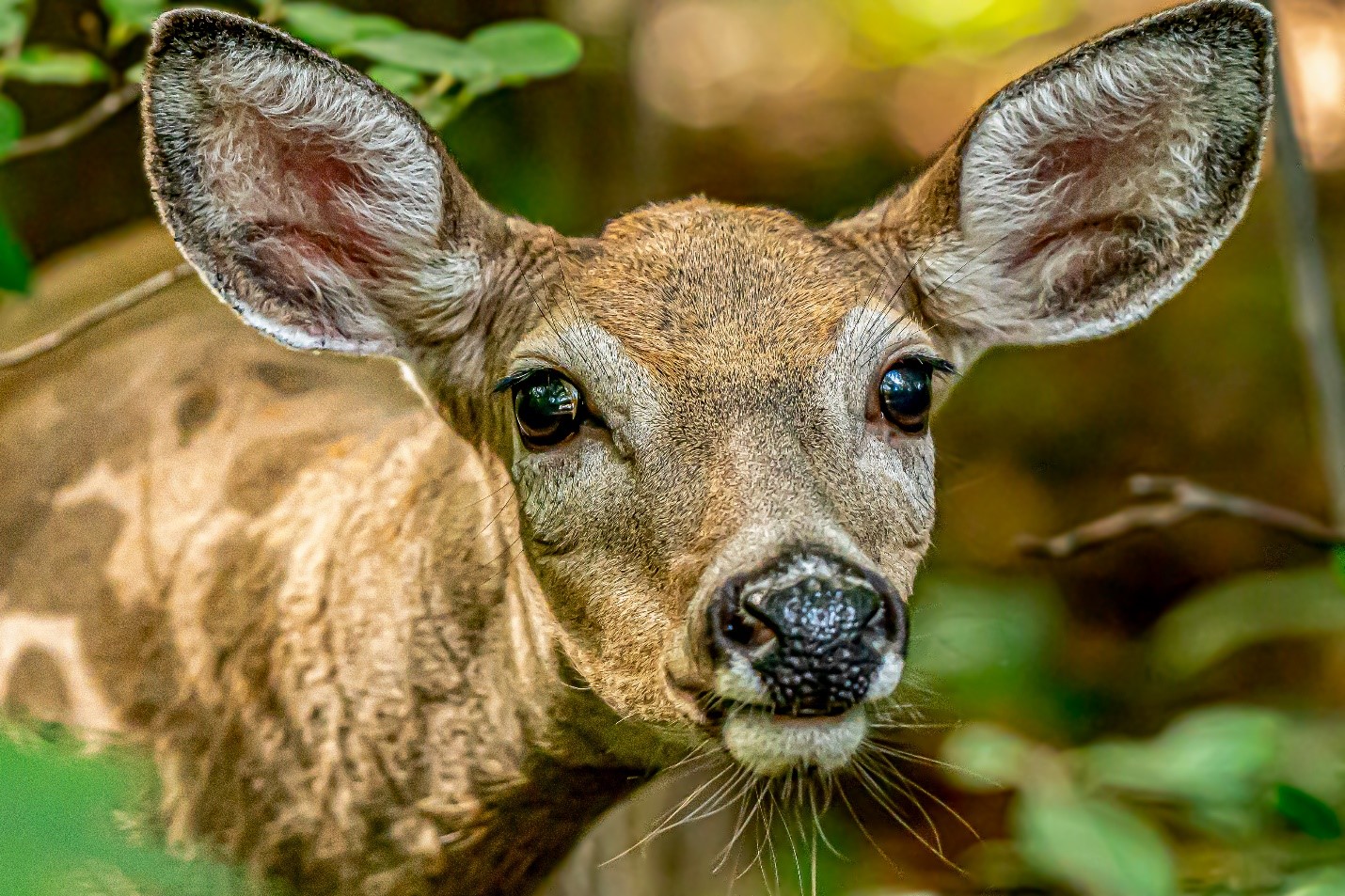Outdoor Delaware is the award-winning online magazine of the Delaware Department of Natural Resources and Environmental Control. Articles and multimedia content are produced by the DNREC Office of Communications.

The winner of the 2023 Delaware Watersheds Photo Contest, Wilmington resident Kimberly Barksdale, captured this great moment with a white-tailed deer in the Brandywine Creek Watershed.
This fall, the Delaware Department of Natural Resources and Environmental Control invited photographers of all ages and skill levels to enter the contest, hosted by the Division of Watershed Stewardship. A panel consisting of an educator, scientist and photographer determined the final photos which proceeded to online public voting. The public determined the winning photograph, Peek-A-Boo, through the Division’s Facebook page.
The goal of the contest is to share the beauty of Delaware’s diverse watersheds while providing a vivid reminder that everything that happens on land directly affects what happens in our waterways. A watershed is all the land that water moves across or under while flowing to a specific body of water. In addition to the land, it also includes the water, plants, animals and humans within it. Delaware consists of many different watersheds and DNREC encourages residents to identify their watershed and learn more about how they can help improve the health of their watershed.
In the mid-1800s, white-tailed deer population in Delaware was significantly reduced due to habitat destruction and hunting, but because of a 13-year ban on hunting and introduction of proper management techniques, the population has been strong since.
“White-tailed deer are one of the most important wildlife species managed in Delaware. Wildlife-watchers, photographers and hunters flock to the state in pursuit of deer. They contribute millions of dollars each year to the state’s economy,” said the DNREC Division of Fish and Wildlife.
The Brandywine Creek watershed, where the winning photo was taken, is part of the Piedmont Basin and stretches through northern Delaware and into Pennsylvania. The Brandywine Creek is a tributary of the Christina River and flows southward out of Pennsylvania and into Delaware near Wilmington. Major land use types in the Brandywine Creek watershed include agriculture followed by forest/wetland and urban uses.
Unfortunately, nonpoint source pollution has a significant impact on many of the wetlands and waterways in Delaware. Nonpoint source pollution originates from a diffuse source (such as an open field or a road) and is transported to surface or ground waters through leaching or runoff. The Brandywine Creek watershed has monitoring sites that are sampled for a suite of environmental contaminants. While portions of the Brandywine Creek have water quality impairments and require nutrient and bacteria reductions, it is home to a wide variety of plants and wildlife, sustaining the only smallmouth bass fishery in the state of Delaware.
DNREC is always looking for new and innovative ways to improve water quality and revitalize our natural environment as well as educate the public about what they can do. The DNREC Nonpoint Source Program provides funding for projects designed to reduce nonpoint source pollution in Delaware. The Division of Watershed Stewardship also hosts educational events and workshops providing residents with important information that helps protect Delaware’s aquatic resources. Visit DNREC’s website and Facebook page to stay up to date.
Related Topics: animals, fun, nature, nature photography, photo contest